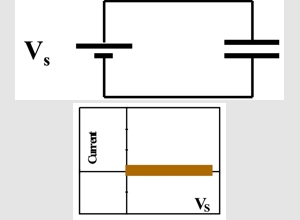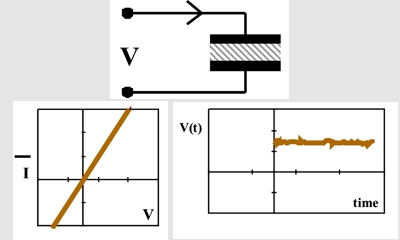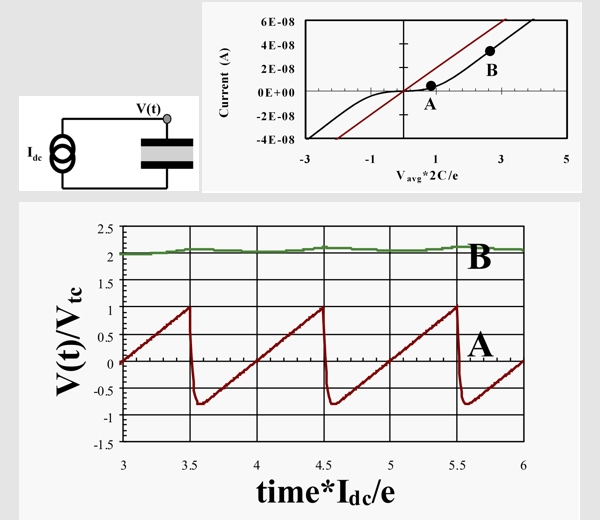

Introduction to Coulomb Blockade and Single Electron Devices
 |
| Figure 1. |
In a circuit formed by a capacitor driven by a voltage source, (see fig. 1) the current flow is zero. However if the plates of the capacitor are separated by a very small distance, then electrons can tunnel across the gap. In that tunnel junction, (see fig. 2) the current-voltage (I-V) characteristic is linear at small applied voltages, and the voltage on the junction will feature some noise. If the tunnel junction is driven by a current source, the I-V is still linear with the slope determined by the resistance of the tunnel junction.

|
| Figure 2. |
Now if the capacitance of the tunnel junction is extremely small ( << 1 fF), and the temperature is low, then a remarkably new feature emerges when the junction is driven by a small current from a current source. As shown in figure 3, the junction voltage oscillates. In addition, the averaged I-V is now non-linear and features a threshold voltage. The oscillation is a consequence of regulated single electron tunneling. Both the junction voltage oscillation, and the threshold in the I-V are manifestations of the coulomb blockade effect.

Figure 3.
The term coulomb blockade is another way to state a salient attribute of tunneling: tunneling cannot lead to an increase in the coulomb energy of a system; and that enables classical control of a quantum process. In the above case of a single junction, the change in the potential energy of the capacitor (Q*Q/(2c)) is less than or equal to zero only when the magnitude of charge on the junction is larger than half the charge of an electron (abs(Q) > e/2 ). Hence at the start of a cycle, the current source charges the capacitor, then when the charge reaches e/2, a single electron tunnels, the voltage drops, then the junction is again recharged; then the process repeats. The threshold feature in the time-averaged I-V can be used to design single electron devices.